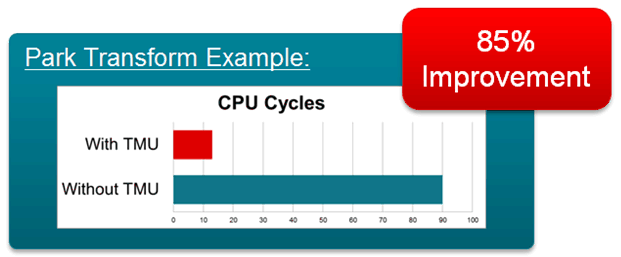SPRY288C April 2020 – December 2021 TMS320C28341 , TMS320C28342 , TMS320C28343 , TMS320C28343-Q1 , TMS320C28344 , TMS320C28345 , TMS320C28346 , TMS320C28346-Q1 , TMS320F280021 , TMS320F280021-Q1 , TMS320F280023 , TMS320F280023-Q1 , TMS320F280023C , TMS320F280025 , TMS320F280025-Q1 , TMS320F280025C , TMS320F280025C-Q1 , TMS320F280040-Q1 , TMS320F280040C-Q1 , TMS320F280041 , TMS320F280041-Q1 , TMS320F280041C , TMS320F280041C-Q1 , TMS320F280045 , TMS320F280048-Q1 , TMS320F280048C-Q1 , TMS320F280049 , TMS320F280049-Q1 , TMS320F280049C , TMS320F280049C-Q1 , TMS320F2802 , TMS320F2802-Q1 , TMS320F28020 , TMS320F280200 , TMS320F28021 , TMS320F28022 , TMS320F28022-Q1 , TMS320F280220 , TMS320F28023 , TMS320F28023-Q1 , TMS320F280230 , TMS320F28026 , TMS320F28026-Q1 , TMS320F28026F , TMS320F28027 , TMS320F28027-Q1 , TMS320F280270 , TMS320F28027F , TMS320F28027F-Q1 , TMS320F28030 , TMS320F28030-Q1 , TMS320F28031 , TMS320F28031-Q1 , TMS320F28032 , TMS320F28032-Q1 , TMS320F28033 , TMS320F28033-Q1 , TMS320F28034 , TMS320F28034-Q1 , TMS320F28035 , TMS320F28035-EP , TMS320F28035-Q1 , TMS320F28050 , TMS320F28051 , TMS320F28052 , TMS320F28052-Q1 , TMS320F28052F , TMS320F28052F-Q1 , TMS320F28052M , TMS320F28052M-Q1 , TMS320F28053 , TMS320F28054 , TMS320F28054-Q1 , TMS320F28054F , TMS320F28054F-Q1 , TMS320F28054M , TMS320F28054M-Q1 , TMS320F28055 , TMS320F2806 , TMS320F2806-Q1 , TMS320F28062 , TMS320F28062-Q1 , TMS320F28062F , TMS320F28062F-Q1 , TMS320F28063 , TMS320F28064 , TMS320F28065 , TMS320F28066 , TMS320F28066-Q1 , TMS320F28067 , TMS320F28067-Q1 , TMS320F28069 , TMS320F28069-Q1 , TMS320F28075 , TMS320F28075-Q1 , TMS320F28332 , TMS320F28333 , TMS320F28334 , TMS320F28335 , TMS320F28335-Q1 , TMS320F28374D , TMS320F28374S , TMS320F28375D , TMS320F28375S , TMS320F28375S-Q1 , TMS320F28376D , TMS320F28376S , TMS320F28377D , TMS320F28377D-EP , TMS320F28377D-Q1 , TMS320F28377S , TMS320F28377S-Q1 , TMS320F28379D , TMS320F28379D-Q1 , TMS320F28379S
4 Trigonometric Math Unit (TMU)
The TMU is an extension of the FPU and enhances the instruction set of the C28x+FPU by efficiently executing trigonometric and arithmetic operations that are commonly used in control system applications. Similar to the FPU, the TMU is an IEEE-754 floating-point math unit tightly coupled with the CPU. However, where the FPU provides general-purpose floating-point math support, the TMU focuses on accelerating several specific trigonometric math operations that would otherwise be quite cycle intensive. These operations include sine, cosine, arctangent, divide, and square root. Some C2000 devices include an enhanced version of the TMU for supporting nonlinear PID applications. Additional instructions have been added for efficient computation of logarithm and inverse exponent operations which are used in the nonlinear control law. The TMU instructions include:
| Operation | C Equivalent Operation |
|---|---|
| Multiply by 2*pi | a = b * 2pi |
| Divide by 2*pi | a = b / 2pi |
| Divide | a = b / c |
| Square Root | a = sqrt(b) |
| Sin Per Unit | a = sin(b*2pi) |
| Cos Per Unit | a = cos(b*2pi) |
| Arc Tangent Per Unit | a = atan(b)/2pi |
| Arc Tangent 2 and Quadrant Operation | Operation to assist in calculating ATANPU2 |
| Logarithm | a = LOG2(b) |
| Inverse Exponent | a = 2-|b| |
The TMU uses the same pipeline, memory bus architecture, and FPU registers as the C28x+FPU, thereby removing any special requirements for interrupt context save or restore.
The C2000 compiler has built-in support that allows automatic generation of the TMU instructions. The user writes code in C using math.h functions, and the compiler uses the TMU instructions, where applicable, instead of run-time support library calls. This results in significantly fewer cycles and dramatically increases the performance of trigonometric operations.
The TMU can have a significant impact on many commonly used real-time control algorithms such as:
- Park and Inverse Park Transforms
- Space Vector Generation
- dq0 and Inverse dq0 Transforms
- FFT Magnitude and Phase Calculations
For example, a Park Transform typically takes anywhere from 80 to more than 100 cycles to execute on the FPU. With the TMU a Park Transform takes only 13 cycles, yielding an 85 percent improvement as compared to without the TMU.
 Figure 4-1 TMU Performance Improvement
for Park Transform Example
Figure 4-1 TMU Performance Improvement
for Park Transform ExampleIn a typical system application, such as digital motor control (AC induction and permanent magnet) and 3-phase solar applications, about a 1.4 times performance improvement can be achieved using the TMU over just the FPU.
| Application | Number of Execution Cycles | Improvement | |
|---|---|---|---|
| FPU | TMU | ||
| Min/Max | Min/Max | ||
| Motor AC Induction | 888/952 | 593/670 | 1.42x (vs FPU) |
| Motor Permanent Magnet | 783/786 | 547/592 | 1.32x (vs FPU) |
| Solar 3-Phase | 1351/1358 | 985/983 | 1.38x (vs FPU) |
An existing C28x design can realize an immediate advantage using the TMU without the need to rewrite any code. Simulation-based generated code can realize the same benefits. Portability is maintained since the same code can be used on TI MCUs with and without the TMU support.